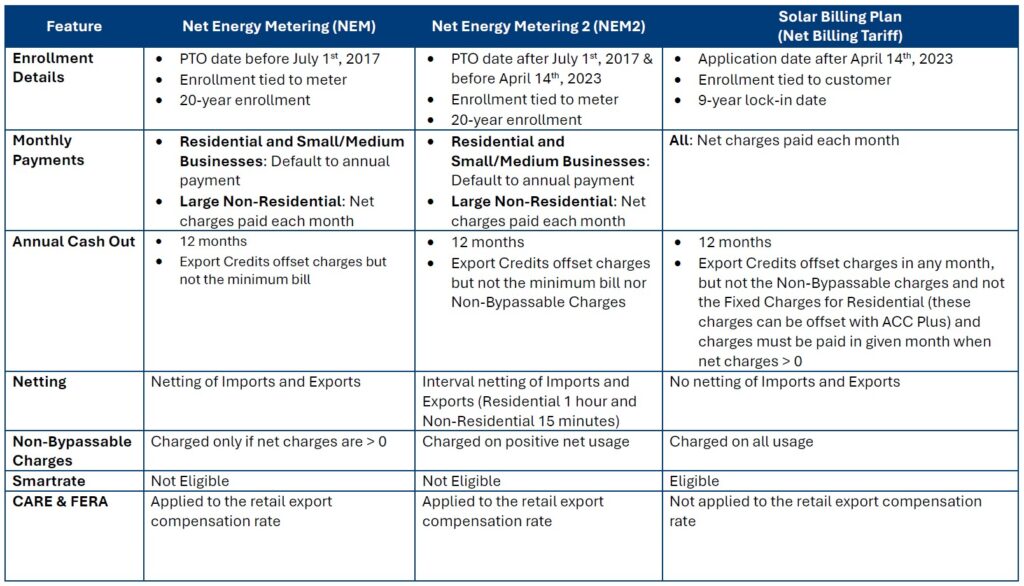RCEA is dedicated to supporting customers like you in generating your own renewable energy. Solar customers with RCEA buy energy at lower rates and receive credits for excess energy supplied to the grid.
Benefits for RCEA Solar Customers
How it Works
Net Generator vs. Net Consumer
| Net Generator | If you generate more electricity than you use, RCEA will credit you each month at your retail generation rate plus an additional $0.01/kWh bonus. Those surplus credits will be rolled over to the next month for you to use later in the year or cash out in May. For Solar Billing Plan customers, the retail rate for credits applies only until the true-up; at true-up, the credits are calculated via Net Surplus Compensation (NSC) rate. |
| Net Consumer | If you use more electricity than you produce, you will be charged for the difference at slightly lower rates than PG&E. See www.pge.com/cca for rate details. |
Billing Plans
Customers with new solar panels will automatically be enrolled into the Solar Billing Plan (SBP). Customers with a Permission to Operate (PTO) date before April 14, 2023, were placed on the Net Energy Metering (NEM) program. See our Understanding Your PG&E Bill: Solar page for a breakdown of a NEM bill.
For more information on the different billing plans, please continue reading below or contact us.
Solar Billing Comparison Chart

Compare Plans
Customers are billed monthly by both RCEA and PG&E. The generation export credits are paid at Energy Export Credit (EEC) rate values until True-Up. At True-Up, the cumulative exported kWh is calculated via the Net Surplus Compensation (NSC) rate.
Customers are billed monthly by RCEA for the “generation” and credits are paid at retail rate plus an extra penny per kilowatt-hour ($0.01/kWh).
Customer are billed monthly by RCEA for the “generation” and credits are paid at retail rate plus an extra penny per kilowatt-hour ($0.01/kWh).
Resources
Understanding Your Solar Billing Plan (SBP) PG&E Bill – Under Development

Are You on the Right Rate?
Make sure your rate plan is right for you using the PG&E Rate Analysis Tool (requires a PG&E online account). To change your rate plan, contact PG&E. You will still receive your electricity generation service from RCEA at a slightly lower rate. See Rate Comparison Tool for details.
Contact Us
We understand that solar billing can add complexity to your electric bill. If you have any questions or would like more information, please contact us. We’re happy to help!
Phone: (707) 269-1700
Email: info@redwoodenergy.org
